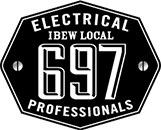The human eye is nothing short of a biological marvel.
Second only to the brain in complexity, each eye is made up of over 2 million working parts--and considering that around 80% of what we learn comes through vision, it's safe to say our eyes are doing some serious heavy lifting.
So, how do we keep these high-performance organs in top form? More crucially--what should we never do if we want them to stay that way?
Simple: don't skip eye protection.
Suit up those peepers. This isn't about vanity; it's about choosing optional foresight over mandatory hindsight. Because trust me-you don't want to be in the ER explaining to a distinctly unimpressed nurse--and an even less impressed spouse--how a stray bit of metal turned into your career's most regrettable fashion statement.
And yes, we hear you. You'd look phenomenal in an eye patch. Add one to your devastating charm and you straddle that deliciously dangerous line between refined and rogue, Madison Avenue sophistication and high seas skulduggery. We get it.
But unless you're planning to market yourself as the modern Hathaway Man (Boomers, smile knowingly; everyone else Google it during your next dopamine break), mastermind global destabilization from a swivel chair à la a Bond villain, or moonlight as Peter Falk charming his way through homicide cases--you might want to keep both eyes firmly in service.
Because, while the eye patch is an aesthetic statement, losing an eye is a functional downgrade. And in real life, monocular vision is less Snake Plissken--mysterious anti-hero--(Again, look it up if unfamiliar) and more HR politely asking whether PPE still fits over your "remaining asset." Before you know it, you're starring on a safety poster about OSHA and NFPA 70E—the very sensible yet wildly inconvenient safety protocols you've been avoiding reading like your SPD and those cheerful newsletters.
And remember:
- Tasks like threading wires, aligning components, navigating tight spaces, or working on ladders/scaffolding become more difficult--and potentially dangerous--without accurate depth cues.
- Losing one eye reduces your peripheral vision on that side. Which means in an industrial setting with heavy machinery, moving equipment, and tight quarters, this increases the risk of missing hazards in your blind zone.
- You work in hazardous environments--—high voltage, heights, confined spaces, rotating machinery. Many companies have their own safety protocols, on top of the ones previously mentioned. And those may require:
- Full visual field
- Medical clearance
- Personal protective equipment (PPE)
- Bottom line: Some employers might not permit monocular vision workers on certain high-risk tasks.
- Tasks like crimping, soldering, or panel wiring require fine motor control and precision--harder with compromised depth perception.
So yes--be beautiful. Be bold. But for heaven's sake--wear eye protection.
There's really no excuse. The Plan hands you a free pair every calendar year through its optical benefit. You'd know that… if meetings and SPDs weren't your sworn nemeses. Perhaps that's your real blind spot.
